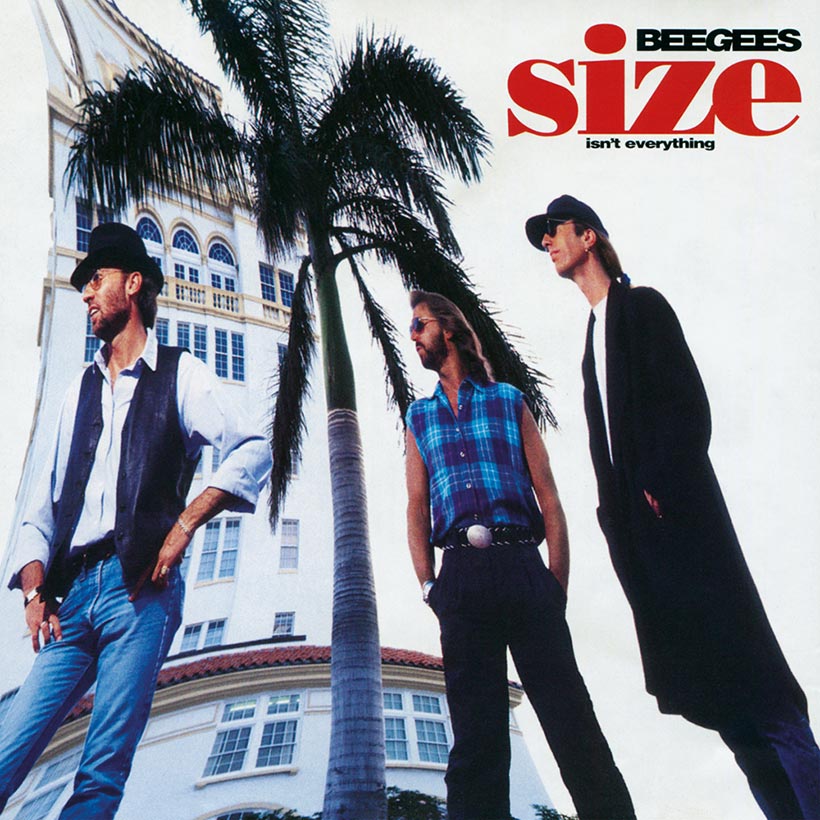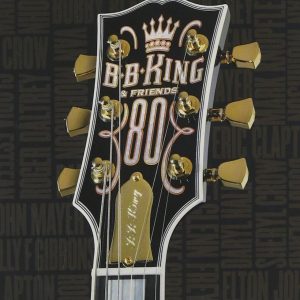In a recording career together of over 35 years, the Bee Gees didn’t just epitomise a number of different eras and genres, they helped create some of them. When they arrived at their 20th studio album – including the two they made before their international breakthrough of 1967 – they decided that the way forward was to embrace the modern sound, but also to remember a time before Saturday Night Fever. Hence the release, on September 13, 1993, of Size Isn’t Everything.
A classic, free-ranging feel
While the Saturday Night Fever-inspired disco explosion of the 70s transmuted into other styles of dance music in subsequent years, Bee Gees retained a club-friendly sound on many of their later albums. That was especially so on much of 1991’s High Civilization, but as they set about a fairly swift sequel for this return to Polydor Records, the Gibb brothers wanted their songs to regain more of a classic, free-ranging feel.
Synthesizers and programming were still the sound of the day, but now there were elements of rock, on an album employing two lead guitarists in Alan Kendall and Tim Cansfield. The Gibbs’ unrivalled pop instincts were to the fore throughout Size Isn’t Everything; also on board, in sessions at Middle Ear in Miami Beach, were the much-travelled George “Chocolate” Perry on bass and Luis Jardim on percussion. In a 14-month recording span, 16 tracks were recorded, pared down to 11 for the finished album.
Bee Gees go jack-swing
While Barry and Robin carried most of the lead vocal duties as usual, Maurice had the opportunity to shine on one of Size Isn’t Everything’s most engaging tracks, “Omega Man.” He also shared the mic with Barry on the upbeat, poppy “Above And Beyond.” The classic three-part harmonies were especially notable on “Blue Island,” a delightfully pared-down piece on which the electronics were replaced by a strumming feel and the harmonica of Gustav Lezcano.
But it was Barry to the fore on the first single “Paying The Price Of Love,” which preceded the album in August and was produced, like the whole record, by the brothers with Femi Jiya. The song became a Top 30 hit in the UK and on the Billboard Adult Contemporary listing, and a chart item in many European countries. Here, the contemporary dance sound was such that Billboard proclaimed in its review: “The day has finally come. The Bee Gees have gone jack-swing.”
The tolling of a nostalgic bell
In September, the brothers played at the Hurricane Relief concert at Joe Robbie Stadium in Miami. Then in November, they topped the bill at the 65th Royal Variety Performance at London’s Dominion Theatre, which also featured enduring 60s stars Cilla Black and Lulu as well as the cast of a revival of the musical so intrinsically linked to the Gibbs, Grease. Bee Gees played career hits such as “Massachusetts” and “You Should Be Dancing” as well as a second release from Size Isn’t Everything. It became, for many, its most enduring track.
“For Whom The Bell Tolls” saw vocals shared by Barry and Robin, whose yearningly distinctive tones gave the song a nostalgic feel that helped take it to an impressive No.4 in the UK, during a six-week run in the Top 10. Across on the album chart, it was the time of Meat Loaf’s Bat Out Of Hell II, Phil Collins’ Both Sides, and Elton John’s Duets, but Size Isn’t Everything held its own in Bee Gees’ homeland, going to No.2 on the Australian charts.
“For Whom The Bell Tolls” gave the Bee Gees the distinction of scoring Top 5 hits in the UK in four consecutive decades, over a 26-year period since the first, “Massachusetts,” in October 1967. A third single from Size Isn’t Everything, the gentle synth- and saxophone-filled “How To Fall In Love, Part 1,” was a further Top 30 UK entry.
Listen to the best of the Bee Gees on Apple Music and Spotify.
Barry Gibb was in pugnacious mood when, at the time of the album’s slightly later November 2 release in the US, he told Billboard: “We are not going to go down remembered as a group from the 70s.” Added Robin: “In the past decade we have had to deal with people saying, ‘Why don’t you do an album of one kind of music, aim at this market, or those demographics,’ and we are pretty sick and tired of demographics.
“We come from an era that was diverse [musically],” continued Gibb. “Our heroes were The Beatles. Everything they did was different. We took a page from that book going back to our first album. And we wanted variety on this album. We didn’t want to do one kind of music.”
Buy or stream Size Isn’t Everything.




